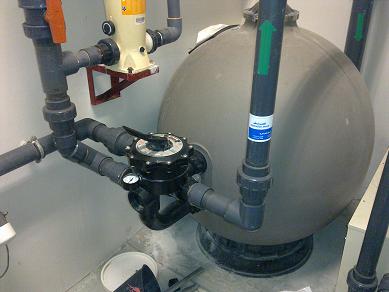

Water Filtration Process
Absorption is the tendency to condense on the surface of a solid. Absorption is the tendency to condense within a porous material. Effective size is the sieve size at which 10% of the sand passes, usually expressed in millimeters. The uniformity coefficient is the sieve size at which 60% of the sand passes divided by the effective size (size of 60% passing / effective size).
The uniformity coefficient has no units. porosity is the volume of the voids (spaces) divided by the total volume. Specific gravity Is the ratio of the mass of a given volume to that of an equal volume of another substance (usually water).
Breakthrough is the passing of turbidity, floculation and etc., through the entire filter medium.
Constant rate is a steady rate of filtration with a loss of head occurring. Stennis rate is a steady decrease in the filtration rate accompanied by a constant head loss. Loss of head (head loss) is, the total pressure drop across the filter medium. Viscosity is the resistance of water to shear stresses. The viscosity of water decreases with increasing temperature.
Types Of Water Filters
- The normal rapid sand filter contains 24 – 30 inch of sand for the filtering medium.
- The effective size of this material is 0.45 – 0.55 mm, with the uniformity coefficient no greater than 1.65.
- A three inch, layer of torpedo sand should be used as a “porting medium for filter sand with an effective size of 0.8 – 2.0 on, and
- a uniformity coefficient not greater than 1.7. Depending on the type of under drain system,
- a certain gravel depth and size is provided under the torpedo sand. If a porous Plate under drain system is used, the supporting medium can be eliminated.
A typical design of a multimedia filter includes 4 inch of gravel 8 inch of sand and 18 inch of anthracite. The theory behind this type of filter is that most of the material will be filtered out In the coarse media with the final polishing
One Response to “Water Filtration Process”
Leave a Reply







 LIKE TO GET UPDATES
LIKE TO GET UPDATES  TO GET EXPERT GUIDE
TO GET EXPERT GUIDE
It’s great that you elaborated that a proper size and depth would offer functionality for your home water treatment. The other day, my friend told me that he and his wife hoped to find a home water filtration that could provide health-safe water for their residence. He asked if I had any idea what would be the best option for long-lasting water treatment. Thanks to this informative article, I’ll tell him it will be much better if he consults a home water treatment equipment service as they can help provide details about home water treatments.